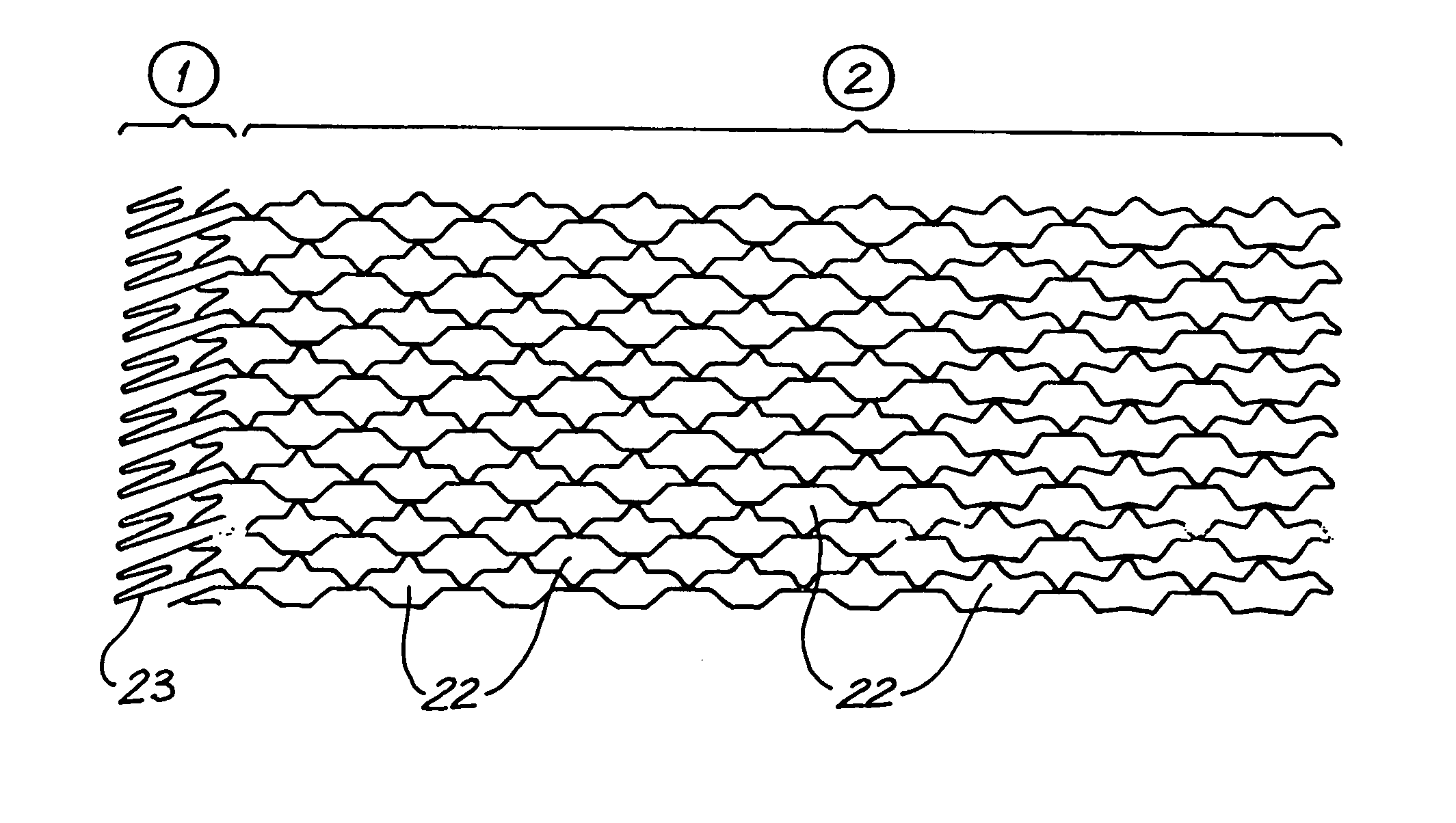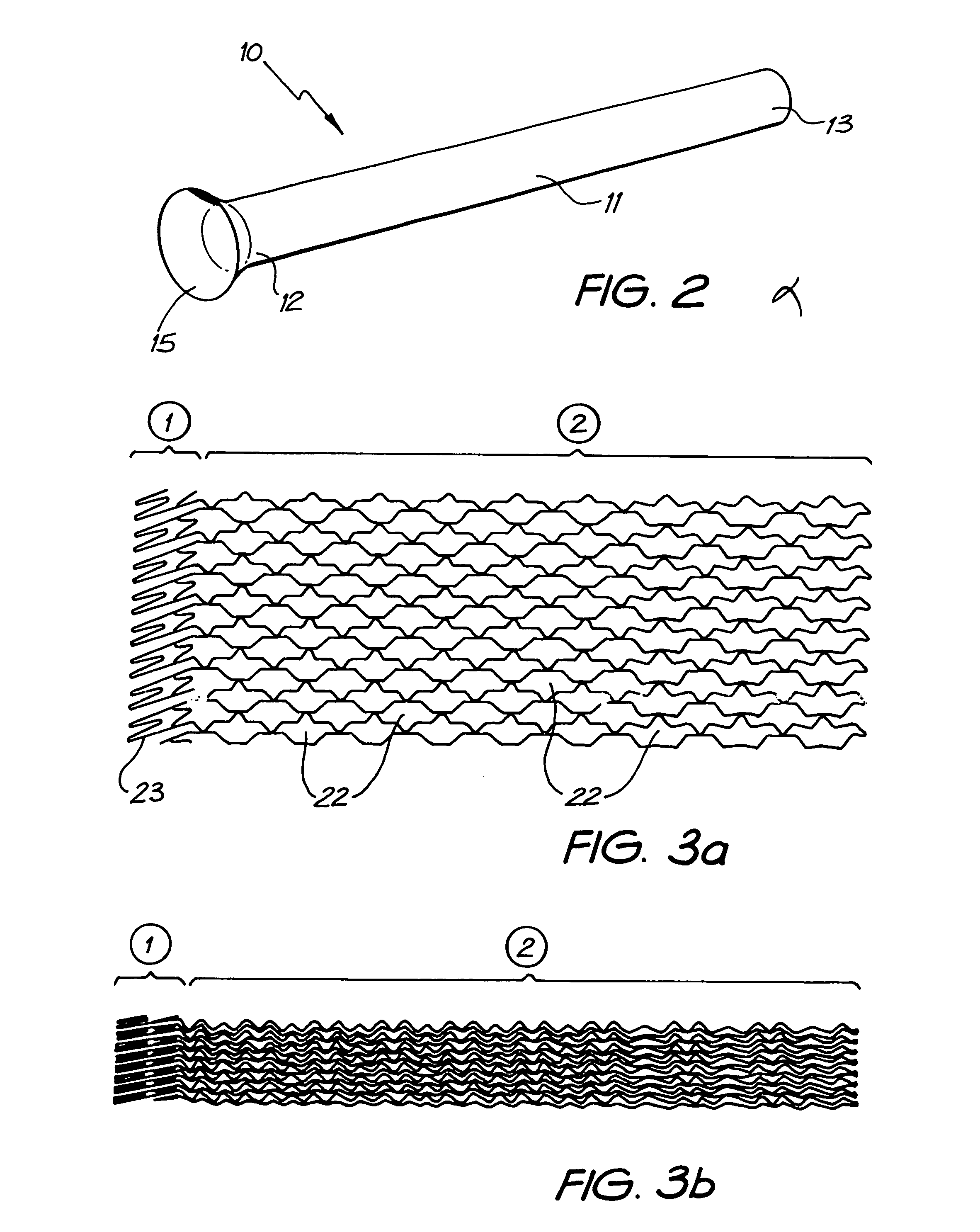Stent
a stent and stent technology, applied in the field of stents, can solve the problems of unacceptably high incidence of re-stenosis in patients treated by balloon angioplasty, adverse effects of narrowing of the vessel on blood flow through the vessel, and severely compromise the flow of blood to the “downstream” vessel. , to achieve the effect of preventing longitudinal movement of the stent in the vessel
- Summary
- Abstract
- Description
- Claims
- Application Information
AI Technical Summary
Benefits of technology
Problems solved by technology
Method used
Image
Examples
Embodiment Construction
[0116] The intraluminal stent of the present invention is generally depicted as 10 in the accompanying drawings.
[0117] Preferably, the intraluminal stent of the present invention is used in the treatment of ostial stenosis although it is equally envisaged that it could be used in the treatment of any other form of stenosis. In ostial stenosis, the plaque or stenotic region 9 is formed at the junction between a pre-branching vessel 21 such as the aorta and a post-branching vessel 20 such as the renal artery which has the effect of narrowing the opening (ostium) of the post-branching vessel 20.
[0118] The intraluminal stent 10 comprises a tubular body 11 extending from a proximal end 12 to a distal end 13. The tubular body 11 is capable of expanding or being expanded from a radially compressed state (as depicted In FIGS. 3b, 5b and 7b) to a radially expanded state (as depicted in FIGS. 3a, 5a and 7a). When in the radially expanded state, the tubular body 11 includes a first flange me...
PUM
 Login to View More
Login to View More Abstract
Description
Claims
Application Information
 Login to View More
Login to View More - R&D
- Intellectual Property
- Life Sciences
- Materials
- Tech Scout
- Unparalleled Data Quality
- Higher Quality Content
- 60% Fewer Hallucinations
Browse by: Latest US Patents, China's latest patents, Technical Efficacy Thesaurus, Application Domain, Technology Topic, Popular Technical Reports.
© 2025 PatSnap. All rights reserved.Legal|Privacy policy|Modern Slavery Act Transparency Statement|Sitemap|About US| Contact US: help@patsnap.com



